Suzuki Jimny, Jeep Wrangler Rubicon and Ford Ranger Raptor – arguably three of the best factory-prepped off-roaders on the market.
Two 4WDs with proud hard-core heritage and a ute with off-road-racing DNA – all very capable 4WDs, but with different strengths and weaknesses.
Which one is top dog in the rough stuff? We took these three bush weapons to a rural NSW property which doubles as a 4WD driver-training facility to figure out which one is the best off-roader for you.
Remember: this is an off-road-only review so our focus is on the details which specifically relate to off-road efficacy.
Read on.
Design
Each vehicle here is pretty well sorted out for off-roading in terms of design – just take a look at the accompanying shots and you'll quickly figure that out for yourself.
The Jimny and Rubicon carry over traditional styling cues from the past – each has a straight up-and-down blocky cabin and short overhangs each end, which all lead to a retention of decent ground clearance and approach, departure and ramp-over angles.
Where the Rubicon sits seemingly low and wide, the Jimmy has a narrower, taller stance.
The Raptor is bigger and bulkier than both of its rivals in this test but it's a high-riding vehicle –sitting atop big BF Goodrich All Terrain tyres and twin-tube 2.5-inch Fox Racing Shocks – so it's more than ready for a solid bit of bush touring.
| Model | Score |
| Suzuki Jimny | 7 |
| Jeep Wrangler Rubicon | 8 |
| Ford Ranger Raptor | 9 |
Practicality
The interior of each cabin errs on the side of practicality rather than plush comfort – think hard-wearing plastic expanses and rubber mats – but that's a spot-on approach because that's what these vehicles are designed for.
The Jimny's cabin is, as expected, a small space but it has a few small storage options, such as a shallow glovebox, a small bin for keys etc in front of the shifter, and two cup-holders, as well as a USB and 12V power point on the centre console, ceiling-mounted over-door grab handles for everyone (except the driver), and a 12V socket in the cargo area.
The four-seater Jimny has ISOFIX child seat mounts in the rear seat but it is better suited to two-up touring, freeing up that rear cargo area (830 litres with rear seats folded down).
The Rubicon's cabin is a bit squeezy, but in a good way – it feels welcoming – and has solid grab handles, and chunky, easy-to-use dials, knobs and switches, net pockets on the doors and in the seat-backs, grippy small-storage spaces, USB ports (plus twin USB and USB-C connections, and an 230V inverter plug for rear-seat passengers) and air vents everywhere.
There are two ISOFIX and three top-tether child-seat anchor points on the back seat.
Rear cargo space is listed as 2050 litres (with seats folded down), and 897 litres with rear seats in use.
The Raptor is bigger than the other two vehicles here so its cabin is much more roomier. Its interior also surely leads this trio in terms of offering a nice space in which to dwell – or be bounced around while 4WDing. High-end materials and soft-touch surfaces are utilised – and there are plenty of nice touches, like stitching, Raptor branding and 'technical suede' seats, but without there being any trade-offs of practical positives.
The Raptor dominates in terms of load-lugging ability, again because of its physical size. Payload is listed as 738kg.
| Model | Score |
| Suzuki Jimny | 7 |
| Jeep Wrangler Rubicon | 8 |
| Ford Ranger Raptor | 8 |
Value
The auto Jimny, as tested, costs $25,990. It's by far the cheapest of this trio and it packs a fair bit into its standard features list – including Apple CarPlay and Android Auto, auto emergency braking, lane-departure warning, climate control air-conditioning, GPS navigation system, a reversing camera, six airbags and ISOFIX child seat mounts – so it's great value.
This diesel Rubicon, as tested, costs $73,275, but that price includes a few optional extras, such as Punk'N exterior colour ($975), Rubicon Luxury Package ($1950), Trail Rail Management System (basically moveable tie-down points; $450), and 17-inch Black Wheel w/ polished lip ($950). Expensive, sure, but you get a fair bit for your money including AEB, dual front and side airbags, blind-spot monitoring, active cruise control, nine-speaker audio, LED lights, 230V inverter, multimedia system with sat nav (armed with off-road pages displaying gradient etc), as well as those light-truck BF Goodrich mud terrain tyres, front and rear diff locks, a swaybar disconnect system, rock-slider sidesteps, and 17-inch alloys.
The Raptor, as tested, costs $74,990 (plus on-road costs). A big chunk of cash but this is a bush-ready, high-performance dual-cab ute ready for action straight out of the car yard and includes 8.0-inch colour touchscreen, Apple CarPlay & Android Auto, AEB, lane-departure warning, reversing camera, 17-inch alloys, dual front, front side, and full-length side curtain airbags, and don't forget those whopping Fox Racing Shocks, and BFG all-terrain tyres.
| Model | Score |
| Suzuki Jimny | 9 |
| Jeep Wrangler Rubicon | 7 |
| Ford Ranger Raptor | 7 |
Engine and transmission
This Jimny has a 1.5-litre four-cylinder naturally-aspirated petrol engine (75kW at 6000rpm and 130Nm at4000rpm), a four-speed automatic transmission, and a dual-range 4WD transfer case.
This Rubicon has a 2.2-litre four-cylinder turbo-diesel engine (147kW at 3500rpm and 450Nm at 2000rpm), an eight-speed auto, and a dual-range transfer case.
The Raptor has a 2.0-litre four-cylinder bi-turbo diesel engine (157kW and 500Nm), a 10-speed auto, and a dual-range transfer case, as well as a six-mode Terrain Management System that includes a Baja mode, inspired by the Raptor's Baja 1000 desert-racing origins.
| Model | Score |
| Suzuki Jimny | 7 |
| Jeep Wrangler Rubicon | 8 |
| Ford Ranger Raptor | 8 |
Fuel consumption
(Note: This test included a lot of low-range 4WDing.)
The auto Jimny has a listed official combined fuel consumption of 6.9L/100km. We recorded 11.03L/100km. It has a 40-litre fuel tank.
Fuel consumption is listed as 7.5L/100km (combined) for the diesel Rubicon. We recorded 9.5L/100km. It has a 81-litre fuel tank.
The Raptor has a claimed 8.2L/100km fuel-consumption figure (combined cycle). A fuel pump-based figure was not calculated for the Raptor, but I reckon it would have been up around the 10.5-litre/100km mark. It has an 80-litre fuel tank.
| Model | Score |
| Suzuki Jimny | 7 |
| Jeep Wrangler Rubicon | 7 |
| Ford Ranger Raptor | 7 |
Driving
Our 4WD course included sand, gravel tracks, corrugations, steep rocky hills, rutted downhill runs, and a lazy pub crawl – only joking.
It was mostly low-speed 4WDing, so we dropped tyre pressures on all three vehicles to 20 psi for better off-road ride and handling, and to improve traction. We planned to drop those pressures lower if we needed to.
The Jimny has a ladder chassis, solid axles, coil springs, and it's on Bridgestone Dueler H/Ts.
This Rubicon has a ladder-frame chassis, live axles, coil springs, and it's on light-truck BF Goodrich Mud Terrain tyres.
The Raptor has a ladder chassis, double-wishbone front suspension, solid axle and coil springs at the rear, and, as mentioned, twin-tube 2.5-inch Fox Racing Shocks and BF Goodrich All Terrain tyres.
First up, we took on a patch of river sand. If you do any four-wheel driving in Australia, chances are you'll spend a fair chunk of your time on sand – either on a beach, in the bush or out in the desert.
The Jimny has a part-time 4WD system and its AllGrip Pro suite of driver-assist tech includes hill descent control, hill hold assist and more. Staying true to tradition, the Jimny still has a stubby stick – in front of the shifter – to work through 2WD, 4WD high range and 4WD low range.
This is a light and compact off-roader and its 1.5-litre engine generally punched the little unit across the sand pretty well.
The Jimny has 210mm of ground clearance so lumpier sections of sand aren't an issue, but what is an issue is the fact that, when the Jimny is driven in high-range 4WD (a good state of play for sand-driving), the electronic stability control chips in at 30km/h, bleeding all of your momentum, which is not ideal when you're driving on sand.
It's also so tall and narrow for its size that it is vulnerable, more so than most 4WDs, to sudden changes in direction, forced or intentional, as well as gusting winds on exposed slopes, any dramatic shift in onboard loads, and even abrupt changes in gradient.
The Rubicon has a dual-range transfer case (with a stubby shifter to switch into 4WD high range and 4WD low range) and driver-assist tech, helpful for off-roading, includes a dependable hill descent control system, off road pages (with off-road specific info displayed, including gradient) and a tyre-pressure-monitoring system.
It has 252mm of ground clearance (listed), plenty of sustained torque on tap, a nice, wide balanced stance, and those grippy muddies (tyres), so constant-pace driving on sand, almost floating across the surface of it, is easily achieved.
The Raptor has a dual-range transfer case and a six-mode switchable Terrain Management System, and it's seemingly made for driving fast on sand, where it feels right at home.
The Raptor is taller wider (1860mm), longer (5426mm) and taller (1848mm) than the other two, by a decent margin, and it's also bigger in every way when compared to the Ranger.
It has a 150mm wider wheel track than its mainstream stablemate, and always sits strong and stable on any surface. It has 283mm of ground clearance as listed.
The Raptor was the liveliest of this bunch to drive on sand – with the added bonus of being able to flick it into Baja mode, via the five-button switch on the steering wheel, which tweaks throttle response, transmission and suspension to better suit the terrain. Lots of fun.
During a set-piece water crossing, none of our contenders were in danger of not making it. There had been rain the night before and, indeed, it still sprinkled during most of our test day, but water levels weren't windscreen-high or anything like that.
The Jimny has a wading depth of 300mm, and while there was a fair bit of rocking and rolling as the little Zook trucked over the submerged rocks in the creek bed – a failure to progress was never a possibility. However, there was so much bouncing and bumping around – and water sloshing at the Jimny's sides – that it did feel, at times, as if I were out fishing in a tinnie ... in heavy seas ... in a storm.
The Rubicon has a standard wading depth of 762mm. It has a bit more ground clearance and almost 40cm more wading depth than the Jimny, so submerged obstacles – such as rocks and toppled tree branches – were more easily avoided than in the Jimny. We did, however, scrape the Rubicon's belly a few times on bigger rocks.
The Raptor has a standard wading depth of 850mm and its taller stance keeps it well clear of rocks and any water ingress – and because it's longer, wider and heavier than the Jimny and Rubicon it's less inclined to rock and roll all over the place during low-speed 4WDing such as this.
We then tackled a steep rocky hill with slippery clay sections and deep wheel ruts that the rain had made even deeper and more severe. 4WD trainers and clubs use the hill as a make-or-break scenario so it's a top track to put these three 4WDs through their paces.
The Jimny's part-time 4WD system is generally up to the task but it doesn't have any diff locks. When you force the Jimny into deep ruts or any other loss-of-traction situation, you have to keep the revs up quite aggressively and get the wheels spinning in order for the traction control to kick in. As a result, the Jimny has to work hard on this sort of terrain, but it's still a lot of fun.
It has off-road angles of 37 degrees (approach), 49 degrees (departure), and 28 degrees (ramp-over) – but just one look at the Jimny is enough to inform you that it's built for 4WDing.
A diff lock, aftermarket suspension and off-road tyres would lift the Jimny's off-road game immensely.
The Rubicon is supremely capable on terrain like this. Its deep low-range gearing is second to none, always getting maximum torque to the tyres as is possible.
It has approach, departure and ramp-over angles of 41, 31 and 21 degrees, and its long wheelbase 'eats' into that ramp-over angle, so this Jeep has to be driven with care on steep sections of rock steps, and also through deep, sharply-angled wheel ruts.
If its Selec-Trac 4x4 system is ever found wanting (not likely), the Rubicon has front and rear diff locks, as well as the sway-bar disconnect, which comes in very handy when you want to gain even more wheel travel so you can get your tyres to the dirt and grabbing ground, rather than spinning in the air.
Otherwise, the Rubicon is almost unstoppable.
The Raptor's engineered as a straight-out-of-the-showroom, high-speed dirt racer but it also does a decent job at low speeds.
Strong low-range gearing, pretty cluey auto transmission, those very grippy tyres, good ground clearance and plenty of wheel travel mean the Raptor can get through the worst of deep rutted climbs and downhills without pause.
Its extra-wide wheel track and super-spongy suspension help to keep it stable and settled through even the roughest of sections.
While its off-road measures – 32.5 degrees (approach), 24 degrees (departure), 24 degrees (ramp-over) – aren't the best around because of its bulk – the Raptor still feels highly manoeuvrable when it counts.
| Model | Score |
| Suzuki Jimny | 7 |
| Jeep Wrangler Rubicon | 9 |
| Ford Ranger Raptor | 8 |
Safety
The Jimny has a three-star ANCAP safety rating but it does have six airbags (including curtain airbags that provide coverage for back-seat passengers), AEB, lane-departure warning, ISOFIX child seat mounts and more.
The Rubicon has a one-star ANCAP safety rating but it has AEB, dual front and side airbags, blind-spot monitoring, rear cross-traffic alerts, active cruise control, parking sensors, reversing camera, tyre-pressure-monitoring system and more.
The Raptor has a five-star ANCAP safety rating and its safety gear includes AEB, rear-view camera, rear parking sensors, lane-departure warning, ESC (with trailer sway control), as well as dual front, front side, and full-length side curtain airbags.
| Model | Score |
| Suzuki Jimny | 7 |
| Jeep Wrangler Rubicon | 7 |
| Ford Ranger Raptor | 8 |
Ownership
The Jimny is covered by a five-year/140,000km warranty. Service intervals are scheduled at six months/10,000km intervals. Capped price servicing is available for the warranty period, costing a total of $2452 over the first 10 services/100,000km.
The Rubicon has a five-year/100,000 km warranty, including unlimited kilometres, five-year capped-price servicing and lifetime roadside assistance as long as you get serviced by a Jeep dealer. Capped price servicing is $499 per service for diesel Wranglers and service intervals are scheduled at 12 months/20,000km for the diesel.
The Raptor is covered by Ford's five-year/unlimited kilometre warranty and capped-price servicing is available.
| Model | Score |
| Suzuki Jimny | 7 |
| Jeep Wrangler Rubicon | 7 |
| Ford Ranger Raptor | 7 |
.jpg)
Verdict
To the credit of their manufacturers, the Jimny and Rubicon have stayed wholeheartedly true to their original adventurous go-anywhere spirit and the Raptor is an honest-to-god performance dual-cab ute.
The Jimny is heaps of fun – it's a real experience driving it through hard-core 4WD terrain – and it is very capable.
But while the other two here are capable AND comfortable while they're driving through very difficult terrain, the Jimny just feels a little too precarious in sections that these bigger vehicles amble through without difficulty.
It has to work harder than the Raptor and Rubicon to achieve what they achieve with less fuss.
However, it is a fraction of the price of either of the other two though and a very appealing proposition for the money.
The Raptor is more suited to high-speed laughs on dirt, gravel or sand, than low-speed 4WDing, but it still manages those challenges with assured competence and comfort.
It may just be the best off-road dual-cab performance ute available, and it's the best all-rounder here, with real daily-driver appeal, but it's not the best off-roader here.
If it's pure real-world 4WD capability you're after, you can't go past the Rubicon. It's better at everything off-road than these other two. It's the most complete off-roader here.
Front and rear diff locks, mud terrain tyres, short-short low-range gearing, and that swaybar-disconnect, all help to make the Rubicon the best rough and ready 4WD weapon here.
| Model | Score |
| Suzuki Jimny | 7.25 |
| Jeep Wrangler Rubicon | 7.5 |
| Ford Ranger Raptor | 7.75 |


.jpg)

.jpg)
.jpg)
.jpg)
.jpg)
.jpg)
.jpg)
.jpg)
.jpg)
.jpg)
.jpg)
.jpg)
.jpg)
.jpg)
.jpg)
.jpg)
.jpg)
.jpg)
.jpg)
.jpg)
.jpg)
.jpg)
.jpg)
.jpg)
.jpg)
.jpg)
.jpg)
.jpg)
.jpg)
.jpg)
.jpg)
.jpg)
.jpg)
.jpg)
.jpg)
.jpg)
.jpg)
.jpg)
.jpg)
.jpg)
.jpg)
.jpg)
.jpg)


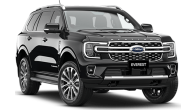


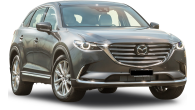

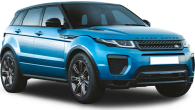


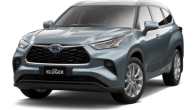


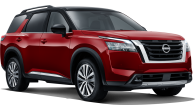


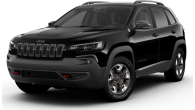
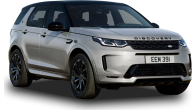
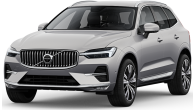


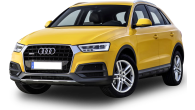




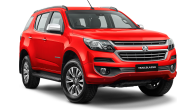


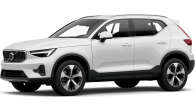

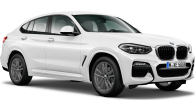

.png)

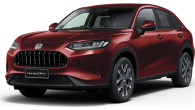
.jpg)



.jpg)


.jpg)
.jpg)
Comments